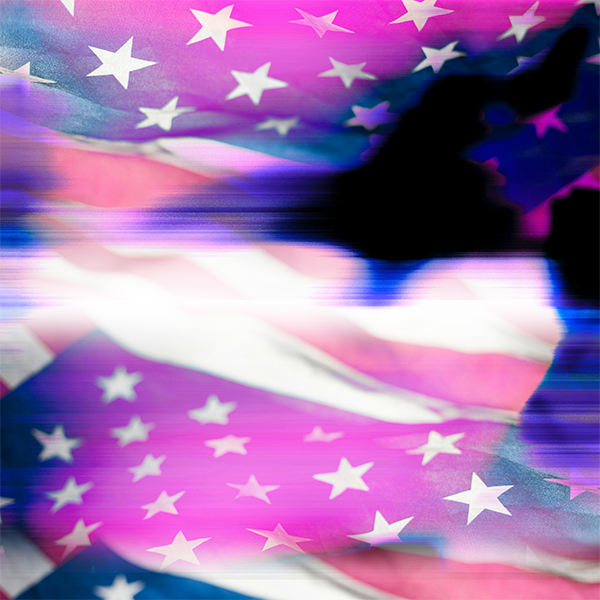Erasing Mary, The Mother of God
Last Sunday, churches across the United States celebrated Mother’s Day in one way or another. Knowing evangelical churches fairly well, I’m sure most of them made some sort of effort to celebrate mothers in their communities: videos from their children sharing heartfelt words, flowers for women to take home after the service, a sermon preached by a woman (perhaps the only Sunday of the year that women preach at certain churches), and maybe a few truly intentional churches took the time to acknowledge the hardships that are part of motherhood: infertility, abortion, child estrangement, etc.
But I wonder how many churches on Mother’s Day made any effort to recognize, celebrate, or even mention the mother of our Savior, Mary of Nazareth?
I wonder how many churches on Mother's Day made any effort to recognize, celebrate, or even mention the mother of our Savior, Mary of Nazareth? Share on XNot a whole lot, I’m sure.
Evangelical churches have historically struggled to recognize and celebrate the role that Mary plays in our faith, in our communities, and most importantly, in our salvation. Outside of Advent season (when a mention of Mary is more or less mandatory), we’re hard-pressed to find her in our weekly sermons, our Bible studies, or our daily prayers (especially not our prayers!). When we think of the great “women of faith” in the Bible, we turn to Sarah, Esther, or Deborah; we remember Hannah, Ruth, or Rebekah; we may even consider Mary of Bethany or Mary Magdalene . . . but rarely do we mention Mary of Nazareth.
This omission, I suggest, is not accidental.
Erasing Mary from our day-to-day lives as evangelical Christians is as deep a tradition as our Catholic friends’ devotion to her. But far from being simply a counter-reaction to Catholic Mariology, the evangelical way of dealing with Mary is a deeply troubling phenomenon with considerable theological and practical implications.
Erasing Mary from our day-to-day lives as evangelical Christians is as deep a tradition as our Catholic friends' devotion to her. Share on XEntrance: Annunciation; Exit: Birth
Let us consider the elements of her life we are most familiar with: As a young virgin, she is chosen by God to bring Jesus into this world. Her response to Gabriel’s annuciation is praised as a sign of faithful obedience and submission to God. We journey with her throughout her pregnancy as she visits her cousin Elizabeth and later reunites with Joseph to eventually make their way to Bethlehem (Luke 1:26-56; 2:1-7). She delivers Jesus into this world in a climactic moment of joy, and slowly but surely, she begins to fade into the background as our focus shifts toward Jesus and what He alone did for us.
Any mentions of Mary outside of what is considered “safe” or acceptable (mainly, the Annuciation and birth narratives—celebrated almost exclusively around Christmas) are treated with caution, seen with suspicion, and often times simply avoided. After all, virtually no evangelical leaders would get in trouble for not speaking enough about Mary.
Does “Christ Alone Saves” Exclude Mary?
One of the most common explanations on why Mary is “properly” sidelined (i.e., erased and silenced) from the story, is that Christ alone saves. While I certainly won’t argue against this statement, I do want to explore what the full extent of this proclamation might mean.
Indeed, our faith tradition upholds that Christ alone saves. But we can’t forget that Christ does not come into this world without the agency, the willingness, and the body of a woman. What does that say to us about God’s character and humility? What does it say about God’s plan for salvation where human participation (female participation, to be precise) is an inextricable part of the story? We’re zealously careful not to place Mary “above” Jesus, but we forget that God willingly submitted himself to the obedience of this Middle Eastern brown-skinned girl, thereby inviting her to participate in God’s plan for salvation in a way that no other human ever will.
We’re zealously careful not to place Mary “above” Jesus, but we forget that God willingly submitted himself to the obedience of this Middle Eastern brown-skinned girl, thereby inviting her to participate in God’s plan for salvation… Share on XA Mother’s Work Is Never Done
But the story does not end there. If we are going to celebrate Mary’s role in bringing Jesus into this world (and thus actively partnering with God in the history of human salvation), we need to acknowledge the entirety of her story as mother of Christ—her commitment to not just bearing this son, but also raising him, nourishing him, protecting him, and remaining by his side until his last breath as she “stood near the cross” (John 19:25).
How often do we consider the impact that Mary’s life and maternal guidance had on the man that Jesus came to be? Or the endless nights she must have tended to Jesus when he was a boy? What about the burdens she carried throughout her life as Jesus was constantly threatened by the powerful leaders of his time? Perhaps we can find a place in our hearts to consider, maybe even honor, her pain, her struggle, her courage, and most of all, her joined sacrifice in giving up her son for the sake of the world.
Why Erasing Mary Impacts the Church Today
In sum, when we ignore the incredibly active role Mary had in Jesus’s day-to-day life, it is easy to ignore or diminish the incredibly active role mothers have in shaping not just our communities, but the women and men that are part of them.
Furthermore, when we allow Mary to be part of the story of the coming of Christ but not his salvific and ongoing work in the world, we end up objectifying Mary’s body, reducing her role to that of a childbearing machine that is easily disposed of once her “duty” has been accomplished. And isn’t that what many churches do to women today? They sideline women to the world of childbearing and home-keeping, withholding opportunities for them to exercise leadership and influence in other spheres of life.
When we allow Mary to be part of the story of the coming of Christ but not his salvific and ongoing work in the world, we end up objectifying Mary’s body, reducing her role to that of a childbearing machine that is easily disposed… Share on XIf we can erase Mary, we can easily do it to any woman in the world. And that, in my opinion, is one of the most troubling implications of the way evangelicals tend to deal with the mother of Jesus Christ.



